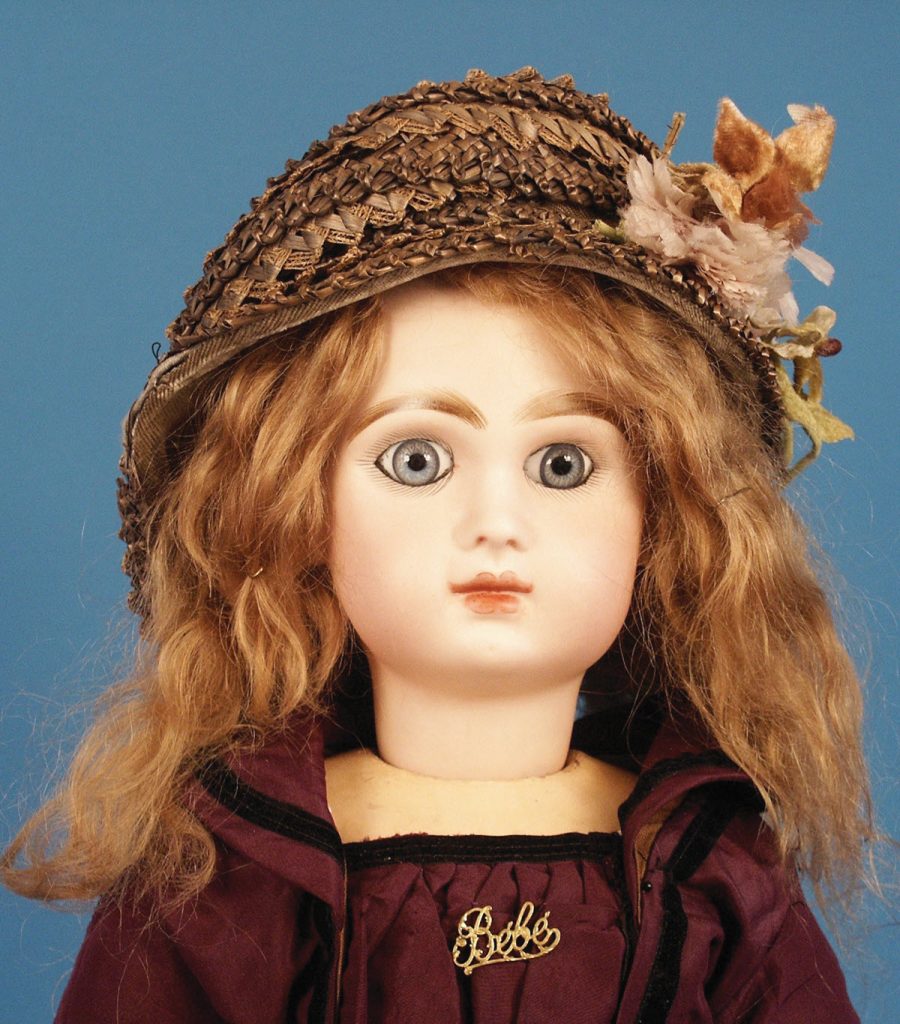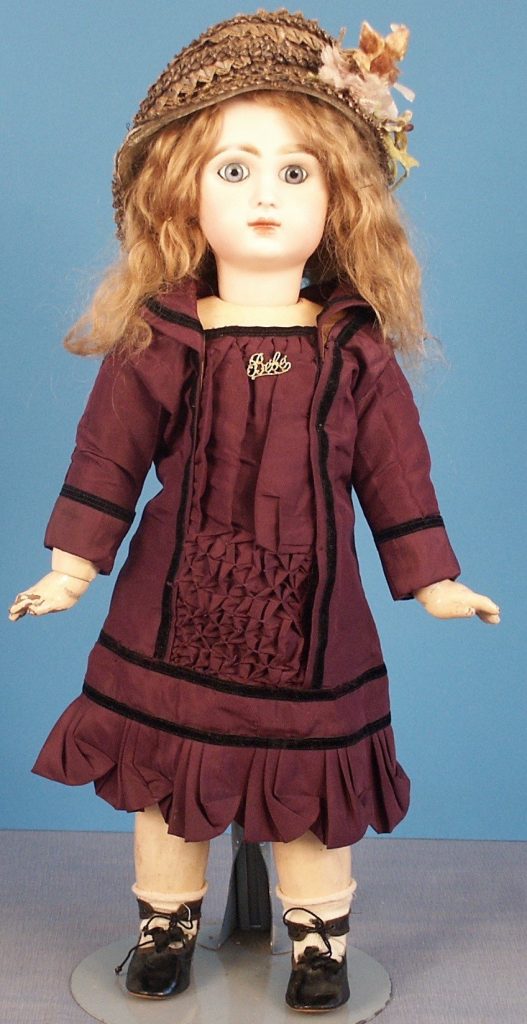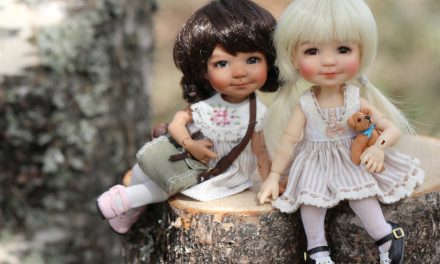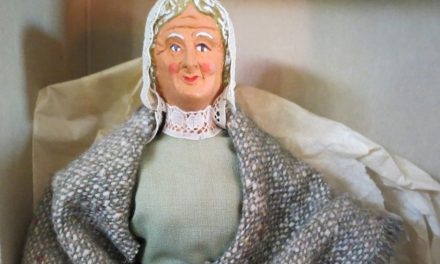By Jan Foulke
Q: My aunt left me this doll. I always admired it when I visited her house. She told me about it, but all I remember is that she said it was French. There are no markings on the head except the number 11. I would like to know the maker and age. This is my first antique doll, and I am so excited to own her.
A: You are fortunate to have been left such a wonderful doll! Although there are no marks, to the practiced eye, it was clearly made by the Jumeau factory in Paris, France. Jumeau faces are quite distinctive, with heavy eyebrows, large luminous paperweight eyes, lush eyelashes, and upper lips with turned-up corners. As you study more antique doll faces, you will learn to recognize them, too.
Jumeau dolls are favorites with collectors, and many have to save up their doll money before they can actually buy one. Jumeaux were made as early as the 1860s, but the first dolls were ladies or fashion dolls (poupées). 1877 to 1878 was an important time for Jumeau because they introduced the child dolls (bebés) with fully articulated wood and composition bodies. This was a totally new concept in the whole doll industry. These new doll designs were presented at the 1878 Universal Exhibition where Jumeau was awarded the Medaille d’Or (Gold Medal), the highest possible recognition.

The new child design was also well-received by the public, and little girls were thrilled to have a play doll proportioned like themselves — looking at it another way, a doll which they could mother. Such had been lacking in the French industry. Not only did the doll face have the look of a child, the body was also chunky yet graceful. Unlike the bodies of the lady dolls, which were nearly all leather with gusseted joints, the new doll had a fully articulated body, which made it easier to dress and undress. Also, the ball joints allowed the body to be maneuvered and posed in many positions. The new designs became so popular that they were copied by all of the French and German dollmakers, ushering in a new generation of doll designs.
In the first few years, the Jumeau dolls went through quite a few changes in face and body designs. Your doll is from the “Tête Jumeau” period, which began around 1885-1886 and continued until 1899, when Jumeau joined the SFBJ conglomerate and ceased to be a separate business. This was the longest and most prolific period of manufacture for Jumeau, making the “Têtes” the most easily found of the Jumeau dolls.
The earlier dolls have a closed mouth. By 1892, dolls were sculpted with an open mouth and teeth. Most Têtes are stamped in red on the backs of their heads with the mark “Déposé Tête Jumeau Bte SGDG” along with a size number, starting with 1 for a 10-inch doll. Your doll, as a size 11, would be about 24 inches tall. The body shown is the correct style for a Tête. Note the child proportions, the attached ball joints, and jointed wrists with dainty raised index fingers.
Sometimes genuine Jumeau dolls turn up with no marking on their heads, like yours. This is because the Jumeau porcelain factory could earn extra revenue by selling some of their heads to other dollmakers, and that is what they did. These producers would not want the Jumeau name on their products, so the heads were not marked. Sometimes these other producers had Jumeau put their own special trademark on the heads, but not always.

Also, some Paris department stores had Jumeau make heads and sometimes even complete dolls for them, which they sold under their own names. Although these heads are not marked, some of them have what collectors call Jumeau checkmarks — usually in a red color. These were likely artist or quality-control marks, but they can help to verify the authenticity of an unmarked head.
For more information about Jumeau dolls, you can consult The Jumeau Book by François Theimer and Florence Theriault. Enjoy your new acquisition! May it be only the first of many wonderful antique dolls that you collect!
Jan Foulke (retired) is an authority on antique and vintage dolls, with over 40 years of experience in the field. She’s the author of the full-color reference book “Jan Foulke’s Guide to Dolls.” Subscribe now to read Foulke’s columns in DOLLS online archive of past issues!”






